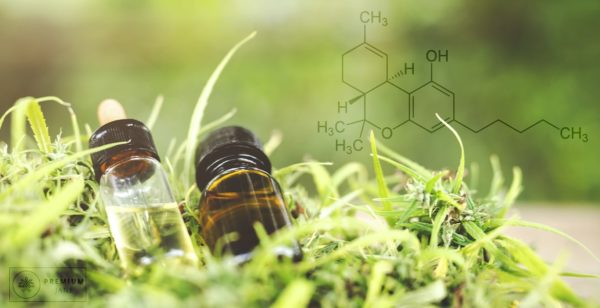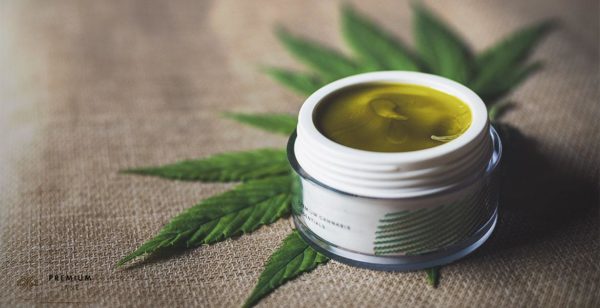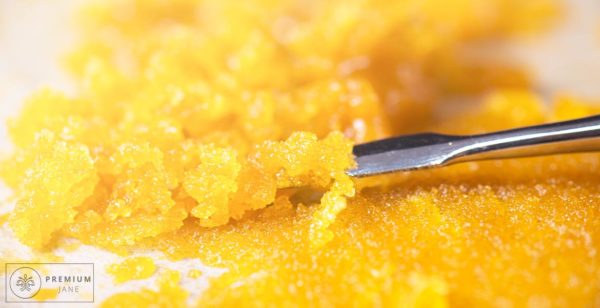What Are Terpenes… And Do They Really Do Anything At All?
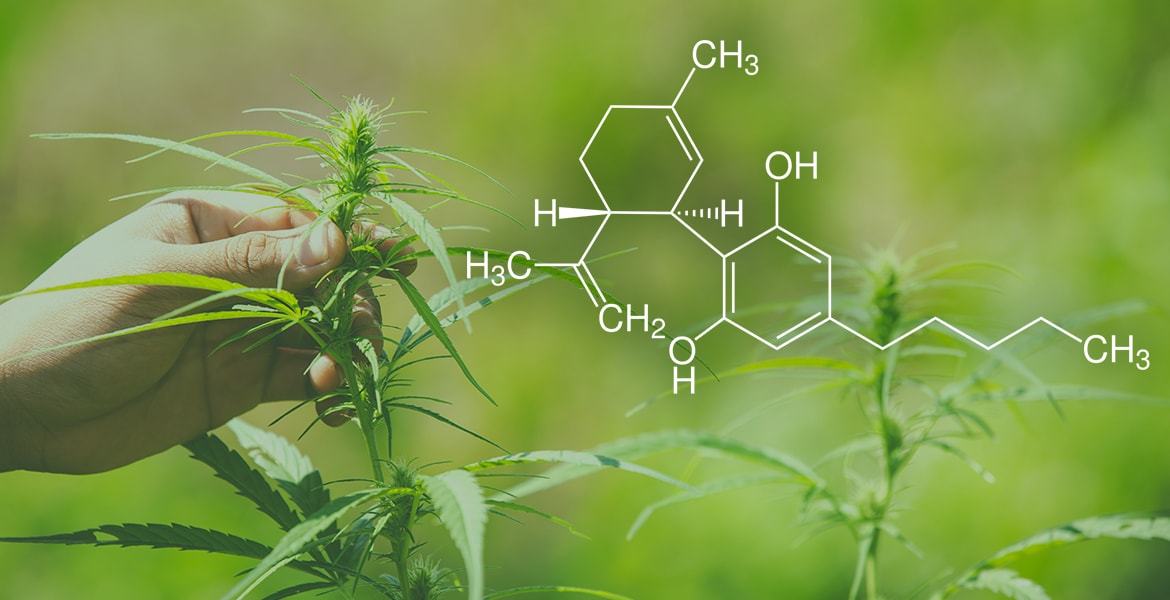
Although you might never have heard of them, you have definitely encountered terpenes before. If you’ve ever enjoyed the scent of a rose or marveled at the blissful aroma of blooming wildflowers, you’ve experienced terpenes.
If you’re a CBD consumer, you’ve undoubtedly come across the term on the label of your favorite CBD oil. But what are these incredible, fragrant compounds — and what exactly do they do in CBD products?
In today’s article, we explore exactly these questions.
What are Terpenes?
Terpenes are natural compounds responsible for the variety of flavors and aromas in different plant species, including hemp and cannabis.
There are over 20,000 terpenes, and the cannabis plant produces at least 100 of them. The production of terpenoids evolved in some plants to act as defense compounds and attract pollinators.
Glandular trichomes – which are glands that look like tiny hairs that protrude from the leaves and flowers – are produced by female cannabis plants. The trichomes form a home for crucial compounds like cannabinoids, terpenes, and flavonoids. Suppose the plants are handled delicately and the trichomes are left intact throughout collection and processing. In that case, the result is excellent cannabis with solid and distinct smells, flavors, and colors.
The production of terpenes depends mainly on abiotic factors such as humidity, light intensity, and temperature; these factors are synthesized in response to various influences. Therefore, cannabis producers put a lot of emphasis on the standardization of growing conditions for their strains.
Some of the latest studies have found that hemp terpenes affect how a strain tastes and smells and how it acts on a chemical level. Terpenes are known to have a unique effect on the endocannabinoid system (ECS) since each type can deliver a different sensory experience.
Terpenes vs. Terpenoids
Since we’ve mentioned both terpenes and terpenoids, let’s look at the difference between the two. Think of terpenes as the natural “on-the-growing-plant” version of terpenoids, whereas terpenoids are transformed by drying out and curing cannabis flower. Ultimately, the drying process changes the chemical structure of the molecules, altering their taste and smell.
Terpenoids are most often used outside of cannabis for their aromatic qualities; manufacturers use them to create essential oils, spices, and perfumes. However, an increasing amount of research shows that terpenoids play a significant role in how cannabinoids work.
The latest research has shown that terpenes significantly influence the smell and flavor of hemp flower and play an important role in the therapeutic effects of a specific strain.
So… What Are ‘CBD Terpenes’?
Terpenes, cannabinoids, and flavonoids represent three distinct classes of chemical compounds that are found naturally in hemp. If you’re looking for a complete, comprehensive list of terpenes, however, you’re going to have to keep looking.
While over 200 distinct terpenes have been identified, there are likely many more to be discovered – particularly if you take into consideration things like terpene analogs and isomers.
The expression CBD terpenes simply refers to terpenes that are commonly found in hemp. When a full spectrum CBD oil is made, it includes all the natural phytocompounds of hemp — and this includes the range of terpenes that are present in a specific genetic strain.
While the following is by no means a comprehensive list of hemp terpenes, it does represent some of the plant’s most commonly found compounds:
Myrcene
Myrcene terpenes are some of the most common terpenoids associated with hemp. They have a wonderfully rich, earthy, herbal scent – just like you’d expect from a freshly-cultivated hemp plant. Despite being the smallest terpene in a structural chemical sense, myrcene appears to boast a range of unique benefits.
Limonene
The name alone gives this one away immediately. The limonene terpene is commonly found in the rinds of citrus fruits, especially lemons. It’s also a crucial terpene in many hemp extract products, and adds a wonderful boost in terms of a CBD oil’s flavor and aroma profile.
Caryophyllene
One of the most abundant terpenes of all, caryophyllene is found in cloves, cinnamon, and black pepper, as well as hemp. It offers a brilliantly spicy, woody aroma. Not much research has been done on caryophyllene benefits, but we’re hoping this is an area of study wherein increased attention is given in the years to come.
Terpinolene
To date, there are few (if any) terpinolene-dominant CBD products on the market. With increased research and accessibility, however, we expect this to change in the years to come.
Pinene
Pinene terpenes are, unsurprisingly, found in pine needles. But they’re also found in several distinct strains of hemp. Pinene also occurs in a number of conifers, as well as a few citrus trees. It possesses a wonderfully distinct aroma, and it’s presence is immediately recognizable in a variety of CBD products.
Humulene
Another common compound in hemp, the humulene terpene is best described as ‘hoppy.’ Perhaps not surprisingly, this compound is found abundantly in various brews around the world – responsible for giving beer its rich, distinctly hoppy taste and aroma.
Ocimene
Even though it’s common in hemp, little is know about ocimene terpenes. These have been some of the most obscure and least-research compounds in the hemp terpenoid spectrum.
Linalool
Another very common terpene in hemp is linalool. This is a compound that many are probably already familiar with, as it boasts a floral, delicate aroma that’s common in many plant species (most notably lavender). As far as linalool terpene effects, some brands add linalool to their range of topical products for its lovely scent, which is commonly used in aromatherapy.
The Unique Function of Terpenes in CBD
The above-listed compounds are some of the most common terpenes in CBD oil. Sometimes, however, brands will add in extra terpenes to supplement naturally occurring ones that are present in a specific strain of hemp.
It’s key to point out that terpenes in CBD oil are most abundant in full-spectrum products. CBD isolate oils are heavily fractionated from the initial hemp extract, meaning many of the natural components of the plant are lost — including both cannabinoids and terpenes.
If you’re looking for a CBD oil that contains a range of beneficial, naturally-occuring terpenes, you’ll want to opt for a full-spectrum product.
Terpenes and Full-Spectrum CBD Oils
Full-spectrum CBD means that most of the terpenes and cannabinoids available stay intact during processing. This makes a big difference in how the body receives CBD.
In recent years, there has been a lot of interest in CBD isolate, which contains only one isolated cannabinoid. However, research suggests that single-molecule CBD is not as effective as CBD that contains a complete range of natural hemp compounds.
As we mentioned earlier, the hemp plant contains well over 100 different terpenes. The variety and amount of terpenes that are in a bottle of full-spectrum CBD will depend on the hemp quality, as well as the method of processing. The good news is that lab tests are able to analyze the content of cannabinoids, as well as the presence of terpenes.
But why are terpenes so important for full-spectrum CBD oils? For starters, terpenes are natural molecules — when combined in full-spectrum oil with other cannabinoids, the benefits are multiplied thanks to a phenomenon known as the entourage effect, which suggests that cannabinoids and terpenes work better together (rather than on their own) to produce therapeutic effects.
The Benefits of Terpenes in High Quality CBD Oil
Little research has been done on the potential benefits of terpenes. However, some data suggests there may be a synergistic relationship between naturally-occuring hemp terpenes and cannabinoids. In other words, it’s possible that hemp cannabinoids (like CBD) function more efficiently when in the presence of terpenes, rather than when they’re isolated by themselves.
If true, this would suggest that full-spectrum CBD products would be more effective in a physiological sense. Still, much more studies will need to be carried out in order to better understand the complete range of CBD terpenes benefits.
Research and Studies on Terpenes
While much more research must be carried out to better understand terpene benefits, it appears these aromatic compounds do possess their own unique range of benefits — which is why they’re a welcome addition to CBD oil.
In the future (pending adequate research), it’s possible that novel terpene health benefits may allow CBD users to tailor their overall experience when using hemp-extracted products.
For example, users looking to use CBD oil in the evening may opt for a product that contains linalool and myrcene; two terpenes that are known for their gentle, relaxing properties.
On the other hand, a CBD product with terpenes like limonene and caryophyllene, may be used to help provide energize and increased levels of focus.
Bottom Line on Terpenes
All in all, it’s clear that terpenes are essential not only in hemp, but also a countless variety of plants and their essential oil extracts. Terpenes can provide an extra boost to any hemp-based product, and may even offer their own range of particular benefits, as well.
One of the advantages of using a CBD terpenes product is you get a more complete “CBD experience.” These compounds are a natural component of hemp, and they are therefore a crucial element to the range of beneficial action that hemp extract has on the human body.
If you’re interested in experiencing the effects CBD oil with terpenes, be sure to invest in high-quality products that are backed up by authentic lab reports verifying cannabidiol and phytochemical content.

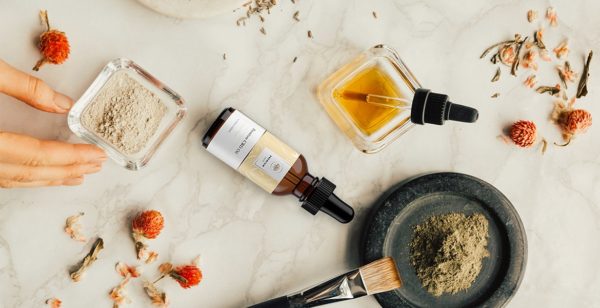

![What Is Full-Spectrum CBD Oil? [The Beginner's Guide]](https://premiumjane.com/wp-content/uploads/2019/05/the-advantages-of-a-full-spectrum-cbd-oil-min-600x308.jpg)
